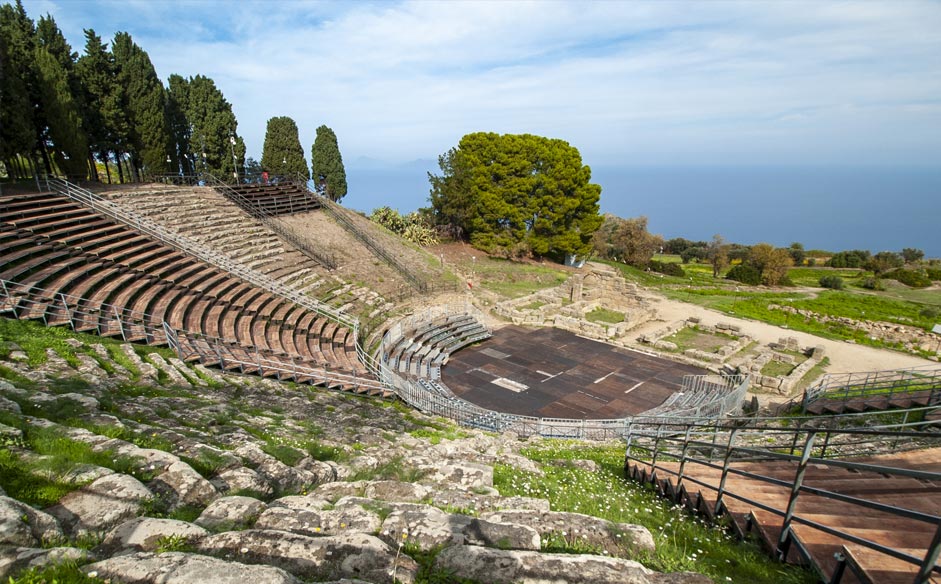Tindari hides many treasures. In the archaeological area are the remains of the ancient city. The first excavations were carried out in the year 1838-1839 and then resumed in 1960 and followed. Among the lands of Tindari mosaics, sculptures and ceramics have been found which are now partly preserved in the Archaeological Museum of Palermo and partly in the local Museum.
These findings, and the excavations that have been made, tell us about Tindari’s past, of what he was and how he lived through the years and various dominations. The urban layout of the city probably dates back to the period of its foundation and is a chessboard with three main streets, one of which housed a theater and the agora (where today the sanctuary of the Black Madonna is located). Interesting are also the walls that develop for about three kilometers and today are partly visible. They were rebuilt in the 3rd century BC C. on previous walls.
The main door is located on the south western side and was flanked by two towers. The ancient theater was built at the end of the 4th century and renovated in Roman times with new decorations and various adaptations for amphitheater games. This theater has long been abandoned and rediscovered only in the nineteenth century. The theater is located near a hill where large staircases were excavated that served as seats and could accommodate about three hundred people. During the Roman era a portico was added and the scene was rebuilt. The orchestra was transformed into an arena. Since 1956, a festival has been held in this theater with various dance, music and theater events. The Romans, besides the remaking of the theater, have also left an entire block with different homes and environments for trade. The houses date back to the first century BC C., although over time have undergone several changes. The “Basilica” is a two-story building from the 4th century that has a large central passage with a barrel vault divided into nine arches.





